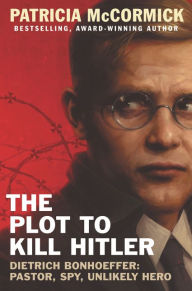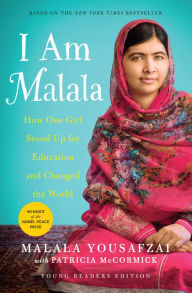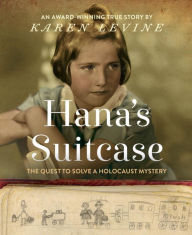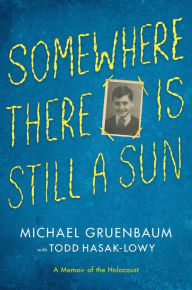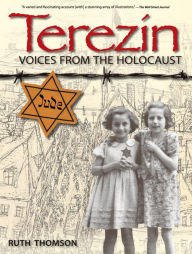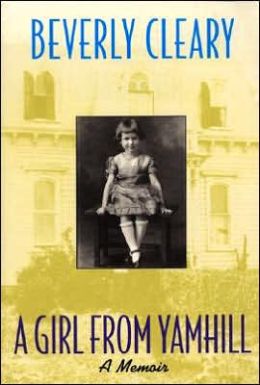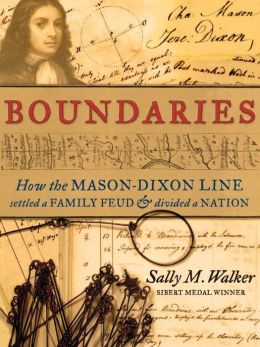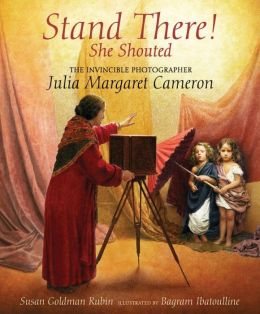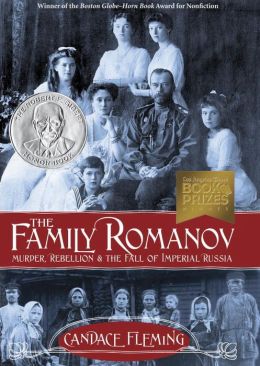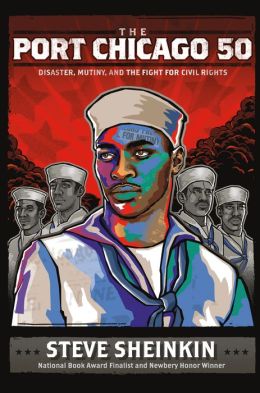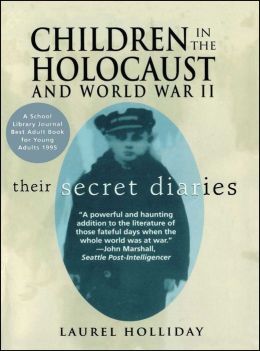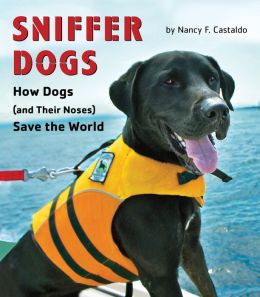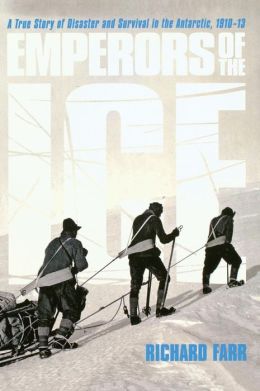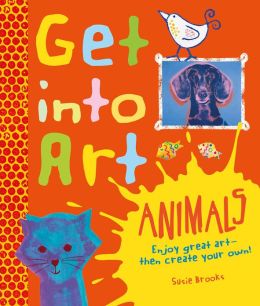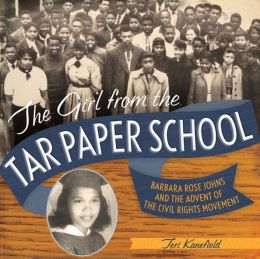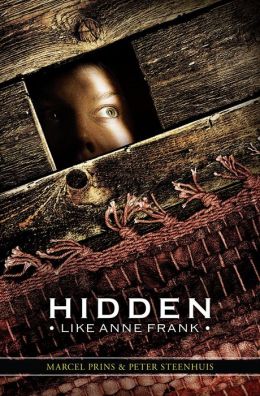new posts in all blogs
Viewing: Blog Posts Tagged with: YA nonfiction, Most Recent at Top [Help]
Results 1 - 25 of 59
How to use this Page
You are viewing the most recent posts tagged with the words: YA nonfiction in the JacketFlap blog reader. What is a tag? Think of a tag as a keyword or category label. Tags can both help you find posts on JacketFlap.com as well as provide an easy way for you to "remember" and classify posts for later recall. Try adding a tag yourself by clicking "Add a tag" below a post's header. Scroll down through the list of Recent Posts in the left column and click on a post title that sounds interesting. You can view all posts from a specific blog by clicking the Blog name in the right column, or you can click a 'More Posts from this Blog' link in any individual post.
Borden Murders. Sarah Miller. 2016. 304 pages. [Source: Library]
First sentence: It happened every spring in Fall River, Massachusetts.
Premise/plot: Sarah Miller's newest book is a middle grade nonfiction book about Lizzie Borden and the 'trial of the century.' On August 4, 1892, Mr. and Mrs. Borden were murdered. Miller chronicles the events stage by stage. Her book is divided into sections: Lizzie Borden Took An Axe, Murder!, The Bordens, Investigation, Inquest, Arrest, Preliminary Hearing, The Waiting Time, The Trial of the Century, Aftermath, Epilogue.
My thoughts: This one was incredibly compelling and very well researched. (Over twenty pages of notes documenting among other things all the dialogue in the book.) Miller presents a balanced perspective of the case allowing readers to make up their own minds. Miller gives all concerned or connected the human touch. The press does not come out looking innocent.
Whether your interest is true crime, biography, or nonfiction set during the Victorian period, this one is worth your time.
© 2016 Becky Laney of
Becky's Book Reviews
March Book Three. John Lewis and Andrew Aydin. Illustrated by Nate Powell. 2016. 246 pages. [Source: Library] First sentence: Y'all better hurry along, now. Sunday School's nearly over, and the main service'll be startin' soon.
Premise/plot: March is the graphic novel autobiography of John Lewis. So far, there are three volumes in this autobiography. Today, I am reviewing book three. It opens in Birminham, Alabama, September 15, 1963, the bombing of a church. This one covers the rest of 1963, 1964, and 1965. The 'past' story line concludes with the 1965 Voting Rights Act becoming a law. The 'current' story line concludes with him deciding to do a graphic novel autobiography.
My thoughts: From start to finish, I personally found this compelling. Not just start to finish book three. Though that is certainly true enough. But start to finish all three books in this autobiography. Even though this third book was longer than the previous two, it didn't feel weighed down by unnecessary elements. If it was weightier in substance--darker, more depressing perhaps--that is for one good reason: it reflects what was happening. The book definitely captures the ongoing struggle of the non-violent fight for freedom: the spirit of determination, the bravery and courage, the stubbornness of men and women and even children taking a stand for something they believed in heart and soul and mind. Yes, this book is violent and bloody, perhaps much more so than the first two volumes even. But it shows readers--of all ages--that this "civil rights movement" was not quick and easy. That it was something that took years--decades even. That it was exhausting. That it took not just a few dozen big names, but hundreds, thousands of people. One can't learn "everything" there is to know about the "civil rights movement" by reading one or two books. This book series showed you how BIG everything was. © 2016 Becky Laney of
Becky's Book Reviews
The Plot to Kill Hitler. Patricia McCormick. 2016. 192 pages. [Source: Library]
First sentence: The Gestapo would arrive any minute.
Premise/plot: Patricia McCormick tells the story of Dietrich Bonhoeffer for elementary-aged readers. It is subtitled pastor, spy, and unlikely hero. Young people likely haven't heard of him at all. So this is a great introduction. The prologue starts at the climax. The first chapter takes us back to his childhood days where we learn that he is a thoughtful, sensitive, intelligent dreamer. This one is very family-focused for the conspiracy to kill Hitler involved many of his family. Year by year, readers learn the how and the why. Notably, readers learn of many opportunities that would have kept him safe and out of the war and the dangers and risks of being in Nazi Germany. Bonhoeffer rejected the easy way out believing that no action was still an action. In other words, failure to rebel and speak out against Hitler was to support him. Silence and escape were unthinkable.
My thoughts: I knew of him as a Christian writer and thinker. I have read The Cost of Discipleship. I knew he died during the war at a concentration camp, I did not know that he was there not just for preaching and proclaiming against the regime, but was in fact an actual spy and co-conspirator. So I learned something!
This one was a quick read.
© 2016 Becky Laney of
Becky's Book Reviews
Why'd They Wear That? Sarah Albee. 2015. National Geographic. 192 pages. [Source: Library]
Sarah Albee's Why'd They Wear That? Fashion as the Mirror of History is a (relatively) quick and entertaining read. Why 'relatively' quick? I read it in one sitting and found it fascinating. Other readers might not find it so.
This book seeks to do so very much: to expose readers (young readers--upper elementary through young adult) to dozens of cultures over the last ten thousand years and ultimately answer WHY DID THEY WEAR THAT? Think HORRIBLE HISTORIES only with a slightly refined focus on fashion.
Is the focus on fashion? Yes and no. Yes, in that fashion is basically discussed on every page. No, in that it is HISTORY that takes center stage. This book is all about building context. Answering the 'WHY' of the title. (It is not focused on WHAT they wore as to possible reasons WHY.) I also saw connection opportunities for linking to art appreciation or even archaeology. 80% of the book is illustrated by artwork not photographs.
I definitely liked that this leaned more towards focusing on history and culture than strictly on fashion. I definitely liked the sidebars. But unfortunately disagreed with the designer who thought it was a good idea to have black text on dark blue. Couldn't read a word of those sidebars.
What I liked best about this one was the amount of detail and research that went into the book.
Perhaps because so much skin was exposed to the drying sun, Egyptians used liberal amounts of oil on their bodies, made from animal fat, olive oil, and other plants. Hair could be conditioned with a paste made from gazelle dung and hippopotamus fat. At dinner parties slaves placed cones of perfumed animal fat on guests' heads. Over the course of the evening, the fragrant grease melted and ran down the hair and neck, scenting and conditioning the hair and bathing the wearer in fragrant grease. Scent cones were not just for the wealthy. Musicians, dancers, servants, and children all wore them as well. (17)
Being a fan of Horrible Histories, I looked for connections. I found plenty!
© 2016 Becky Laney of
Becky's Book Reviews
I Am Malala. Malala Yousafzai with Patricia McCormick. 2014. Little Brown. 240 pages. [Source: Library]
I wish I had known there were essentially two different books called 'I Am Malala.' I read, by mistake, the one adapted for young readers. I would have preferred to read the one written for adults. Not because I have a huge problem with adult nonfiction books being adapted for younger readers, I've never really given it any thought before. I don't have strong feelings one way or the other. But because I'm probably only going to read one, and, I'd want as full a story as possible. Now, I'm curious: how are the two different, and, what was left out of the younger reader's edition. But am I curious enough to seek out the other book and read the same story twice?! See. I'm torn now. I don't think I will...at least not now. But perhaps in a year or two, we'll see. (Has this ever happened to you, what did you decide?!)
So. This one is a biography of Malala Yousafzai. She is a believer in education for girls and women. Her outspokenness, her bravery angered the Taliban in Pakistan. Threats were made on her life, on her father's life. Eventually she was shot in the face on the school bus one afternoon. The book covers several years before the incident. One gets a sense of what life was like in Pakistan at that time--around 2008 or 2009, I believe, is when it opens. One especially gets a sense of what life was like in her household. Her father started several schools for girls; and he believed his daughter should have every opportunity to learn, to study, to be free to be herself. He supported--if not encouraged--her daughter to find her voice, and, to speak up for what she felt was right. Together they decided that it was worth the risk to their own lives.
Education is important. Girls need the chance, the opportunity for education just as much as boys do. An eleven or twelve year old girl should have the opportunity to go to school instead of being married off if her family arranges it. There should be more than one way to raise a girl, more than one option of how her life could go.
Malala is an advocate for education, for girls' education. Her message to the world did not stop after the Taliban shot her. In fact, if anything it magnified--amplified it. Her international audience grew much, much larger. Now everyone knew her, knew her story, knew what she stood for. There would be no stopping her now.
What I enjoyed about this book was how real it was. It could have easily been an issue book from start to finish. A book so passionately driven by one cause--one message--that it almost drowns in it. But that wasn't the case with this one. The way her story was told was very grounded in reality, very humble. This is one girl's story. And, yes, in some ways she is extraordinary. But in other ways she's ordinary too. The way that she describes her family life, the way that she describes having friends, it just felt very down-to-earth and genuine.
I would recommend this one. But as I said I wish I had known that there were two books to choose from. If you've read the adult one and the young adult one, did you notice any differences? Were the differences big?
My favorite quote:
My school was a heaven. Because inside the Khushal School, we flew on wings of knowledge. In a country where women aren't allowed out in public without a man, we girls traveled far and wide inside the pages of our books. In a land where many women can't read the prices in the markets, we did multiplication. In a place where, as soon as we were teenagers, we'd have to cover our heads and hide ourselves from the boys who'd been our childhood playmates, we ran as free as the wind. We didn't know where our education would take us. All we wanted was a chance to learn in peace. (34)
© 2016 Becky Laney of
Becky's Book Reviews

By:
Becky Laney,
on 1/29/2016
Blog:
Becky's Book Reviews
(
Login to Add to MyJacketFlap)
JacketFlap tags:
books reviewed in 2016,
Nonfiction,
Holocaust,
World War II,
YA nonfiction,
j nonfiction,
mg nonfiction,
2002,
review copy,
2016,
Add a tag
Hana's Suitcase. Karen Levine. 2002/2016. Crown Books. 144 pages. [Source: Review copy]
Would I recommend Hana's Suitcase by Karen Levine? Yes, yes, a thousand times yes. This would be a great introduction to the subject of the Holocaust for elementary students. (My first "Holocaust book" was The Hiding Place by Corrie ten Boom. Do you remember your first Holocaust book?) One reason why I think it would be a good fit for young readers is the way the subject is approached. It is unusual and unique. It is a story about children learning about the Holocaust for the first time. It is about the learning process--the research process as well.
Chapters alternate between the present and the past. The "present" story begins with an empty suitcase, "Hana's" suitcase. This is an object found in a Japanese Holocaust museum. The children--and the director--are eager to know WHO IS HANA? They know her birth date, that she was Jewish, that she ended up in a Nazi concentration camp. But who was she? what did she look like? what was her family like? what was her childhood like? What happened to her? Did she survive? Did she die?
The present chapters narrate this learning-process, this investigation. I love that it illustrates history-coming-to-life, how fun and exciting history can be, even how relevant and important it can be to ask questions, to be persistent, to follow leads, etc.
There are also chapters set in the past that tell Hana's story, and tell it almost from her point of view. Readers ultimately learn that much of this information came from her brother who did survive the war. Because the chapters alternate, readers will get the answers to some questions before the people in the book.
I liked how these two stories come together. This one is worth reading.
© 2016 Becky Laney of
Becky's Book Reviews
Breakthrough: How Three People Saved "Blue Babies" and Changed Medicine Forever. Jim Murphy. 2015. Houghton Mifflin Harcourt. 144 pages. [Source: Review copy]
If I had to describe Breakthrough in just a few words, I'd choose these: fascinating, compelling, a must-read. If I had to pack it all into one sentence? Something like, Breakthrough by Jim Murphy is a fine narrative example of nonfiction for young readers at its best. Of course, I don't have to limit my review to just a few words or a few sentences. But the best books so overwhelm you with their greatness that though you want to gush about them at great length, you're sometimes at a loss of words for you know that you can never do the book you just read and loved justice.
Breakthrough is the story of three people: Dr. Alfred Blalock, Dr. Helen Taussig, and Vivien Thomas. Dr. Blalock was a doctor who spent most of his time doing research, his specialty was studying shock: what it was, what caused it, how to fix it and save lives. He was a doctor who needed a research assistant, a more-than-capable research assistant, an assistant that would be able to do his own research, experiments, and surgeries. That assistant was a black man, Vivien Thomas. He was not technically a doctor or a surgeon. So his story of how he became part of this historic team is quite fascinating. (It would have been easy for most who worked at the hospital to assume that Thomas was a janitor, a "mere" janitor, if you will. But that was so far from the case!!!)
Readers learn about all three people--their stories and backgrounds and how they came together to help save 'blue babies.' Readers also learn a bit about the field of medicine at the time--the 1930s and 1940s. Heart surgery was not done at the time; it was almost unthinkable for doctors and surgeons to contemplate operating on the heart. "Blue babies" were babies born with heart defects. They might live for a few days, a few weeks, or a few years. But all babies born with heart defects were almost surely fated to die early. Dr. Helen Taussig was a pediatrician who was broken-hearted enough about it to want to do something. Even if other doctors were hesitant or even hostile to help her in her research. She ended up working with Dr. Blalock, and his involvement meant Vivien Thomas doing much of the work: the tests, the experiments, the surgeries, all on animal test subjects of course. The author does address how some found this controversial--doing surgeries and experiments on animals, in this case on dogs--but he stresses how valuable the research was to doctors, and, how their discoveries led to life-changing techniques and practices that would never have been possible without that initial animal research. Thomas, the man doing the test surgeries, also needed to invent the surgical tools to operate.
And without a doubt this first case of heart surgery on a baby, Eileen Saxon, was life-changing. (I believe it was one of the first (successful) heart surgeries ever performed.) This surgery changed the lives of the doctors, changed the field of medicine, and changed people's perceptions of what was possible.
© 2015 Becky Laney of
Becky's Book Reviews
The Wise Girl's Guide to Life. Robin Brande. 2015. Ryer Publishing. 109 pages. [Source: Review copy]
Did I enjoy reading Robin Brande's The Wise Girl's Guide to Life: 100 Tips for Increasing Your Confidence and Happiness? Yes. For the most part. Though perhaps written with tween or teen girls in mind, I think some of the advice is so good, so wise, that it will last you your whole life long. In other words, even if you don't "need" all 100 tips, there is a good chance that a handful of them will be just-right for you, no matter your age.
The Wise Girl's Guide to Life reads like a devotional. Most people probably tend to associate devotional books with faith or spirituality or Christianity to be exact. And that is not the impression I want to give you. It's not. The Wise Girl's Guide to Life isn't exactly about passing along spiritual wisdom to readers. (I would never classify the advice as "Christian advice.")
No, when I say devotional, I mean that it's a short passage with an inspirational, invitational, uplifting feel. Each of the 100 readings has a concise, often practical, nugget of wisdom that you can take with you and process throughout the day.
For example:
- You decide who you are.
- The only way to change is to change.
- Accept where you are, then go from there.
- Being who you are inspires others to do the same.
- Ask yourself questions.
- Tell yourself what you most need to hear.
I definitely liked this one. It's a good book.
© 2015 Becky Laney of
Becky's Book Reviews

By:
Becky Laney,
on 10/26/2015
Blog:
Becky's Book Reviews
(
Login to Add to MyJacketFlap)
JacketFlap tags:
Simon and Schuster,
YA nonfiction,
verse novel,
j nonfiction,
mg nonfiction,
library book,
2015,
books reviewed in 2015,
Nonfiction,
autobiography,
memoirs,
Add a tag
Enchanted Air. Margarita Engle. Illustrated by Edel Rodriguez. 2015. Simon & Schuster. 208 pages. [Source: Library]
Did I enjoy Margarita Engle's Enchanted Air? A thousand times yes! I don't remember when I first discovered Engle's verse novels, I just remember it was love at first sight from the first book on. Every novel of hers which I've read, I've ended up absolutely loving. I really should treat myself to rereading all of her novels.
Enchanted Air is the author's memoir of her first fourteen years. It is all in verse; wonderful, glorious verse as only she can write. She writes of her travels back and forth from the United States and Cuba. (In addition to writing about other family travels, vacations, if you will.) She writes of various moves within the U.S, all in California, I believe. She writes of summer days and school days. Of belonging, wanting to belong, needing to belong. Of uncertainty, confusion, and on the opposite extreme: JOY. Joy of knowing, of discovering, of loving, of living, of just being. The focus is on herself and on her family. She grew up during the "Cold War." And she shares with readers her experiences; how upsetting and confusing it could be to grow up Cuban American at a time when Cuba was very much THE ENEMY. She also writes about her love of reading, writing, and storytelling.
From "Learning" (p. 134)
At home, I scribble tiny poems
all over the walls of my room.
Inside those miniature verses,
I feel safe, as if I am a turtle,
and the words
are my shell.
"More and More Stories" (p. 82
I find it hard to believe
that I am surviving
a whole summer
without a library
for finding
the familiar
old magic
of books.
But storytelling seems
like magic too--a new form
that is also
ancient
at the same time.
Will I ever be brave enough
to tell old-new tales
in my own way?
From "Refuge" (p. 54)
When I climb a tree, I take a book with me.
When I walk from school, I carry
my own poems, inside my mind,
where no one else
can reach the words
that are entirely
completely
forever
mine.
© 2015 Becky Laney of
Becky's Book Reviews

By:
Becky Laney,
on 10/21/2015
Blog:
Becky's Book Reviews
(
Login to Add to MyJacketFlap)
JacketFlap tags:
Nonfiction,
YA nonfiction,
mg nonfiction,
review copy,
Candlewick,
j nonfiction,
2015,
2015 Cybils-eligible,
books reviewed in 2015,
Add a tag
Book, My Autobiography. John Agard. Illustrated by Neil Packer. 2015. Candlewick. 144 pages. [Source: Review copy]
First sentence:
My name is Book and I'll tell you the story of my life. In good time you'll be hearing about clay tablets, the invention of the alphabet, parchment, manuscripts that light up, libraries, and all that kind of stuff. But my story goes even further back. Before Book, there was Breath. Book has written an autobiography. He wants you--his readers--to know his life story: from his earliest beginnings to the present day. (Yes, book will let you know his thoughts on e-books.) It is written in a casual, conversational style. It includes some detail, but, it's not heavy on detail either, perhaps aiming for enough information to be entertaining but not so much that readers are tempted to skip or skim.
At times, I really liked the style of this one. For example:
It must have been fun being a little letter in those days, with different people taking you and shaping you to their own language--straightening you here, curving you there, as they saw fit. Even writing you in all directions, right to left, left to right, not to mention downward and upward. A page must have felt like a trampoline. (25)
But I wouldn't say that the reading experience cover-to-cover was all that magical. The book was good, but, not GREAT for me.
Readers learn some facts about the history of the book, the written word. Quotes and poems about books and reading are shared throughout.
© 2015 Becky Laney of
Becky's Book Reviews

By:
Becky Laney,
on 10/5/2015
Blog:
Becky's Book Reviews
(
Login to Add to MyJacketFlap)
JacketFlap tags:
Nonfiction,
Holocaust,
World War II,
Jewish,
YA nonfiction,
mg nonfiction,
library book,
2015,
books reviewed in 2015,
Add a tag
Somewhere There Is Still A Sun. Michael Gruenbaum and Todd Hasak-Lowy. 2015. 384 pages. [Source: Library]
Looking to read a memoir of the holocaust? Michael Gruenbaum has teamed up with Todd Hasak-Lowry to write Somewhere There Is Still A Sun. This memoir is not reflective. In fact, it is actually written in present tense, first person present. I must admit that took a bit of getting used to on my part. In a way, it almost seems unnatural. But. It wasn't a distraction either. I did not stay focused on the mechanics of how it was written for long. I did get swept up in the narrative. And with good reason, it is compelling and intense.
There is an innocence to the narrator, to Misha, for he is as sheltered as he possibly can be as a Jew living in a Nazi-occupied country. That is, Misha hasn't really grasped how life-and-death the situation is. Misha is still focused on life, on things like playing soccer and going to the movies. His mother and older sister seem to be keeping some things from him, for better or worse. And these things don't come to the reader's attention until the author's note. (Do all readers read authors' notes? I do. But I'm not sure everyone does.) Because of Misha's innocence, many readers may know more than he does. (Though maybe not all readers. I don't want to presume that every single reader will have read five or six holocaust books by the time they come across Somewhere There Is Still A Sun.) It is an interesting position to be put in as a reader, to know more than a character.
Misha's memoir focuses on his time in a Jewish ghetto in Prague, and, in Terezin. Terezin is still relatively new to me to read about, so I found this one fascinating. For example, Misha takes part in one or two of the plays held in Terezin.
What I appreciated the most about Somewhere There Is Still A Sun is the focus on relationships--the bonds between characters. Misha is separated from his mother and sister for many years. He is one of many assigned to a room. (I want to say that forty young boys shared a room?) Relationships matter in books, and it really gives one a complete story.
© 2015 Becky Laney of
Becky's Book Reviews

By:
Becky Laney,
on 8/17/2015
Blog:
Becky's Book Reviews
(
Login to Add to MyJacketFlap)
JacketFlap tags:
Nonfiction,
Holocaust,
World War II,
Jewish,
Candlewick,
YA nonfiction,
mg nonfiction,
2011,
review copy,
books reviewed in 2015,
Add a tag
Terezin: Voices From the Holocaust. Ruth Thomson. 2011. Candlewick. 64 pages. [Source: Review copy]
Terezin is a small fortress town in the Czech Republic. It was built in 1780 by the Austrian emperor Joseph II and named after his mother Maria Theresa. The town might forever have remained largely unknown to the rest of the world. Instead it attained notoriety. During the Second World War, the Nazis turned Terezin into a ghetto and renamed it Theresienstadt. Here, they imprisoned thousands of Jewish people--first Czechs, then Germans, and, later Danish and Dutch. Many were then sent to their deaths at Auschwitz.Ruth Thomson provides readers with a short and concise history of Terezin (Theresienstadt) during World War II. Her narration does an excellent job piecing things together. The book is RICH in primary sources. You might be thinking that means diaries, journals, memoirs, interviews, and the like. And you'd be partly right. But it is also rich in artwork. There were talented--very, very talented--artists at work in the ghetto or camp. They drew--or painted--what the Nazis wanted or demanded. But they also worked secretly on their own pieces--pieces that document what life was really like there, the atrocities they faced daily. Through words and art--readers truly do get "voices from the Holocaust." The book provides a summary of what was going on in Europe starting with when Hitler first came to power in the early 1930s. The focus is on this one particular camp/ghetto, but, Thomson provides enough context to give readers a fuller picture of what was happening.
I have read many books about the Holocaust, about World War II. I haven't read as many about Theresienstadt, so this was a great introduction for me. I would definitely recommend this one.
© 2015 Becky Laney of
Becky's Book Reviews

By:
Becky Laney,
on 6/10/2015
Blog:
Becky's Book Reviews
(
Login to Add to MyJacketFlap)
JacketFlap tags:
Nonfiction,
Holocaust,
autobiography,
World War II,
Newbery Honor,
YA nonfiction,
children's classic,
mg nonfiction,
library book,
1972,
Add a tag
The Upstairs Room. Johanna Reiss. 1972. HarperCollins. 208 pages. [Source: Library]
I am so glad I decided to read Johanna Reiss' The Upstairs Room. This one has been on my list of books I needed to read for quite a while--over a decade at least. It is nonfiction--a biography--set during World War II. The author and her sister were Jews that hid for several years from the Nazis.
Readers meet Annie, the young heroine, and her family. She has several older sisters, a mother and father. The war changes everything for the family. The mother, who was close to death anyway--the Nazis invasion of Holland didn't really change the outcome. The family found hiding places, but, separate hiding places. Annie was placed in a hiding place with one of her sisters. Readers meet the two families that hid the two girls. One family became like a second family to her. I found the book to be a quick read, and quite intense.
The book itself was well-written: both compelling and well-paced. What surprised me a little bit, and what might surprise others as well, is the language. I wasn't expecting (strong) profanity in a Newbery Honor book! I really wasn't. That being said, it wasn't a huge issue for me--as an adult reader. But I could see how it might not work for certain families as a read-aloud choice.
© 2015 Becky Laney of
Becky's Book Reviews

By:
Becky Laney,
on 4/6/2015
Blog:
Becky's Book Reviews
(
Login to Add to MyJacketFlap)
JacketFlap tags:
HarperCollins,
biography,
Nonfiction,
autobiography,
YA nonfiction,
adult nonfiction,
mg nonfiction,
library book,
books reviewed in 2015,
Add a tag
A Girl from Yamhill. Beverly Cleary. 1988/1996. HarperCollins. 352 pages. [Source: Library]
If you grew up reading Beverly Cleary, you should make time to read her autobiography, A Girl From Yamhill. This first autobiography covers her life from her earliest toddler memories through high school.
In Cleary's books for children, she often focuses on what it's like to BE a kid: to go to school, to spend time with friends, to encounter not-so-friendly kids, to play, to 'get along' or not with your family. But also to THINK like a kid. I thought she was always really good at capturing childhood anxieties and worries. So in A Girl from Yamhill, readers get a chance to find out what Cleary's own childhood was like, what her home life was like, what her school experiences were. Reading A Girl From Yamhill gave me a greater appreciation for the Ramona books. It's not as if you could say that Beverly was Ramona. She wasn't. Though she did play BRICK FACTORY. (Also Beverly had a doll named after a car.) But I could see some correlation between the two certainly. For example, she writes of the financial difficulties, and of the stress her father was under when he was in-between work or out or stuck in a miserable job. So there were certain things that reminded me of the Ramona books. I do feel the Ramona books are timeless.
This one covers so many years. I'm not what the 'perfect' audience age would be. It isn't a light read or a funny one.
So I really enjoyed reading this one. Perhaps I enjoyed it so much because I read and reread Cleary's books so often.
© 2015 Becky Laney of
Becky's Book Reviews
Boundaries. Sally M. Walker. 2014. Candlewick. 208 pages. [Source: Review copy]
While American history is not my favorite subject, I did enjoy various aspects of Boundaries: How The Mason-Dixon Line Settled A Family Feud and Divided a Nation. I can appreciate the thoroughness of the research and the organization of the narrative.
It's a broad subject. The book begins in England and follows two men who established colonies in the New World. One man, a Catholic, the second man, a Quaker. One would establish Maryland, the other would establish Pennsylvania. It follows those two families for a chapter or two pointing out the disputes and troubles regarding the border or boundary between the two colonies. It points out that there were regions that BOTH claimed and that BOTH tried to tax settlers. So one governing body could say pay taxes to me, not them. Readers could see how residents could find it frustrating and confusing. Most of the book, however, is about two men, two scientists: Charles Mason and Jeremiah Dixon. It goes into great detail about HOW the two men surveyed the land, walked the three lines to establish boundaries. It is very science-y, very technical. It shares details about their work, their crews, their journeys, their guides, etc. This project lasted several years. One chapter focuses on the Mason-Dixon line as symbol of free states and slave states, a division of North and South. That chapter discusses about two hundred years worth of history. The last chapter is an odd one. It brings the Mason-Dixon line into contemporary times; it speaks of the men and women who have taken an interest in it, have taken an interest in the boundary stones, who have set off on a quest to find the original markers, or, who have worked to get historical markers for the region in various locations.
I found this one to be a bit dry in places.
© 2014 Becky Laney of
Becky's Book Reviews
Brown Girl Dreaming. Jacqueline Woodson. 2014. Nancy Paulsen Books. 336 pages. [Source: Library]
Brown Girl Dreaming is a lovely, often fascinating, memoir written in verse. "Verse novels" can be tricky for me. Sometimes I love them, sometimes I really don't. But in this case, it works well. The writing is just lovely, for the most part. The book is rich in detail capturing what it was like to grow up in Ohio, South Carolina, and New York in the 1960s and 1970s. The people. The places. The sights, sounds, and tastes. The feelings. It's a book that feels personal: an intimate look at family and friends. I very much enjoyed reading it.
Brown Girl Dreaming is a memoir of an author. So it's no big surprise that the focus of this one is on words and stories and reading and writing, of using words and stories to make sense of the world, or, to make a whole new world. But in addition to being about an author's journey, it is a novel about identity as well: who am I, why am I here, what am I supposed to do, etc.
How can I explain to anyone that stories
are like air to me,
I breathe them in and let them out
over and over again. (247)
© 2014 Becky Laney of
Becky's Book Reviews
Stand There! She Shouted: The Invincible Photographer Julia Margaret Cameron. 2014. Candlewick. 80 pages. [Source: Review copy]
Stand There! She Shouted is a biography of Julia Margaret Cameron, a noted photographer of the nineteenth century. From birth to death, details of her life are highlighted for young readers. She was born in India, raised in France, recuperated from an illness in Cape Town, South Africa, where she met her future husband, Charles Hay Cameron. The book does spend some time on her personal life: daughter, sister, wife, mother, grandmother. But it also spends plenty of time on her hobby/career as a photographer. How she learned about photography. Her first camera. Her first photographs. Her first failures. Her first successes. Who she photographed and why. Her favorite techniques and unique style. (She liked the subject to be slightly out of focus. She liked the softness.) How many photographs she took--3,000. One thing the book did really well was focus on how her sitters or posers felt. Did they like posing for her? How did they describe the experience? I liked these accounts of her work.
The book is illustrated by Bagram Ibatoulline. I love his work. I do. But. I wish there had been more photographs by Julia Margaret Cameron.
Favorite quotes:
She selected her sitters carefully. In a letter to a friend, she said that there were three reasons she photographed: "great beauty--great celebrity--and great friendship." (58)
As a photographer, she was ruthless. Children, her favorite subject, feared her. Julia Margaret lurked by the door, ready to stop a passing child for hours of posing. Edith Bradley Ellison recalled that the children of Freshwater "loved" her but "fled from her." When they saw her, they'd call out, "She's coming! She'll catch one of us!" And when Julia Margaret caught them, she bribed them with candy to pose. (46)
© 2014 Becky Laney of
Becky's Book Reviews
The Family Romanov: Murder, Rebellion, and the Fall of Imperial Russia. Candace Fleming. 2014. Random House. 304 pages. [Source: Library]
I've had this one checked out from the library for months, it seems. But once I actually started reading it, it moved quite quickly. That doesn't mean it was an "easy" read, however. It was just as dark and depressing as you might expect. It isn't always easy to read a book when you know the ending.
This one is rich in details, I thought. And it did a great job of putting everything into context, especially in terms of social classes. One got a feel for what life was like for the rich and the poor. It was easy to understand WHY the masses were ready for change, ready to rebel, ready to have a voice, ready to be taken seriously. Desperation. The book dwells on the desperation felt during these decades. That and despair. It's not an uplifting book. It's not a book with a lot of hope to it.
I think it authentically captures the times, the injustice of the times. And in a way, it is fascinating enough. But it's also heartbreaking. Because it doesn't matter if you're looking at the before or after picture, life was HORRIBLE, living conditions were awful.
© 2014 Becky Laney of
Becky's Book Reviews
The Port Chicago 50: Disaster, Mutiny, and the Fight for Civil Rights. Steve Sheinkin. 2014. Roaring Brook. 208 pages. [Source: Library]
Wow! What a book! Port Chicago 50 is a compelling nonfiction read. It is informative and detailed, but, it never felt like it was too much, like it was too-information-heavy. It was fascinating and at times shocking. It examines HOW African-Americans were treated in the navy during the second world war. It deals with prejudice and discrimination and injustice. Specifically it focuses on a select group of soldiers stationed at Port Chicago. The soldiers moving explosives from docks to ships were all African-Americans. These soldiers received no special training or instructions. It didn't take them long to figure out that disaster could come at any time, that every day came with big, big risks. Disaster did come. It was awful. It changed the survivors--haunted the survivors. So when these men are asked weeks later to go back to work with explosives, well, some decide to say no. The book is ultimately about 50 men who decided that they did not want to obey orders to load explosives. About the consequences of their actions--or inaction as the case may be. The men were charged with mutiny and put on trial. Would justice be served? Would they have a fair hearing?
The Port Chicago 50 is emotional and fascinating. It was a beautifully written story about the fight for justice and equality. It was everything a nonfiction book should be.
Definitely recommended.
© 2014 Becky Laney of
Becky's Book Reviews
Children in the Holocaust: Their Secret Diaries. Laurel Holliday, ed. 1996. 432 pages. [Source: Library]
Children in the Holocaust and World War II: Their Secret Diaries is an almost must-read in my opinion. It is incredibly compelling and emotional. Memoirs are great. They are. I have loved many autobiographies and biographies. But diaries are a bit unique. They tend to stay in the moment; there is a rawness perhaps in the emotions. They capture specific moments in time. They record the best and worst and everything in between. These diary entries are well worth reading.
These children's diaries are testimonies to the fact that telling the truth about violence is not harmful. In fact, one wonders how much greater harm these boys and girls would have suffered had they not written about the horrific events they were experiencing. Far more dangerous than reading about atrocities, I believe, is the pretense that atrocities do not occur. To turn our eyes away and refuse to see, or to let children see, what prejudice and hatred lead to is truly to warp our collective psyche. It is important for all of us--adults and children alike--to acknowledge the depths to which humankind can sink. The children teach us, by sharing their own direct experience of oppression, that nothing is more valuable than human freedom. This lesson alone is reason enough to read and to encourage children to read, these diaries.
This book gathers together diary entries from twenty-two writers. The countries represented include: Poland, Holland, Germany, Czechoslovakia, Austria, Hungary, Lithuania, Russia, Belgium, England, Israel, and Denmark. Seven of the twenty-two writers are from Poland. Some writers survived the war. Others did not. I believe that all of these entries have been previously published in some format, in at least one language. The listed age refers to the writer's age for the first diary entry printed in the book. This book provides excerpts from diaries. None of the diaries, I believe, are reprinted in full. These excerpts represent the diaries as a whole, and provide a bigger picture for understanding the war.
- Janine Phillips, Poland, 10 years old
- Ephraim Shtenkler, Poland, 11 years old
- Dirk Van der Heide, Holland, 12 years old
- Werner Galnick, Germany, 12 years old
- Janina Heshele, Poland, 12 years old
- Helga Weissova-Hoskova, Czechoslovakia, 12 years old
- Dawid Rubinowicz, Poland, 12 years old
- Helga Kinsky-Pollack, Austria, 13 years old
- Eva Heyman, Hungary, 13 years old
- Tamarah Lazerson, Lithuania, 13 years old
- Yitskhok Rudashevski, Lithuania, 14 years old
- Macha Rolnikas, Lithuania, 14 years old
- Charlotte Veresova, Czechoslovakia, 14 years old
- Mary Berg (pseudonym), Poland, 15 years old
- Ina Konstantinova, Russia, 16 years old
- Moshe Flinker, Belgium, 16 years old
- Joan Wyndham, England, 16 years old
- Hannah Senesh, Hungary and Israel, 17 years old
- Sarah Fishkin, Poland, 17 years old
- Kim Malthe-Bruun, Denmark, 18 years old
- Colin Perry, England, 18 years old
- The Unknown Brother and Sister of Lodz Ghetto, Poland, Unknown Age and 12 years old
I won't lie. This book is difficult to read. Difficult in terms of subject matter. It is an emotional experience. Readers are reading private diary entries. The entries capture the terror and horror of the times. They capture the uncertainty that almost all felt: will I survive? will I survive the day? will I survive the war? will my family? will my friends? will I witness their deaths? will I have ANY food to eat today? tomorrow? how much worse can it get? when will this all be over? will I be alive to see the end of the war? what if the Nazis win? The diaries capture facts and details. But they also capture feelings and reactions.
Shootings have now become very frequent at the ghetto exits. Usually they are perpetrated by some guard who wants to amuse himself. Every day, morning and afternoon, when I go to school, I am not sure whether I will return alive. I have to go past two of the most dangerous German sentry posts..., Mary Berg, February 27, 1942, p. 233
Dr. Janusz Korczak's children's home is empty now. A few days ago we all stood at the window and watched the Germans surround the houses. Rows of children, holding each other by their little hands, began to walk out of the doorway. There were tiny tots of two or three years among them, while the oldest ones were perhaps thirteen. Each child carried a little bundle in his hand. All of them wore white aprons. They walked in ranks of two, calm, and even smiling. They had not the slightest foreboding of their fate. At the end of the procession marched Dr. Korczak, who saw to it that the children did not walk on the sidewalk. Now and then, with fatherly solicitude, he stroked a child on the head or arm, and straightened out the ranks. He wore high boots, with his trousers stuck in them, an alpaca coat, and a navy-blue cap, the so-called Maciejowka cap. He walked with a firm step, and was accompanied by one of the doctors of the children's home, who wore his white smock. This sad procession vanished at the corner of Dzielna and Smocza Streets. They went in the direction of Gesia Street, to the cemetery. At the cemetery all the children were shot. We were also told by our informants that Dr. Korczak was forced to witness the executions, and that he himself was shot afterward. Thus died one of the purest and noblest men who ever lived. He was the pride of the ghetto. His children's home gave us courage, and all of us gladly gave part of our own scanty means to support the model home organized by this great idealist. He devoted all his life, all his creative work as an educator and writer, to the poor children of Warsaw. Even at the last moment he refused to be separated from them. ~ Mary Berg, August, 1942, p. 239
© 2014 Becky Laney of
Becky's Book Reviews
Sniffer Dogs: How Dogs (And Their Noses) Save The World. Nancy F. Castaldo. 2014. Houghton Mifflin Harcourt. 160 pages. [Source: Review copy]
Sniffer Dogs was a great read. It is packed with information. I learned so much by reading it. For example, did you know that there are specially trained dogs who can alert diabetics (type 1) if their blood sugar is too high or too low?! While I knew that there were dogs involved in search and rescue, I did not know that there were also dogs especially trained to search out bones. The book is very reader-friendly; I loved all the photographs. I loved the personal stories about the men and women who work with and train dogs to do very special tasks.
I would definitely recommend this one to readers of all ages who love dogs. It would also make a great choice for those readers who enjoy compelling nonfiction. This book is about dogs who make a difference, and also about the special bond between dogs and their trainers/owners.
© 2014 Becky Laney of
Becky's Book Reviews
Emperors of the Ice. Richard Farr. 2008. FSG. [Source: Review copy]
I have mixed feelings on Emperors of the Ice: A True Story of Disaster and Survival in the Antarctic, 1910-13. On the one hand, it is a fictional memoir based on an actual memoir. Much research was done to write this one. Perhaps just as much research as if it was a traditional nonfiction book. The author's love of the subject was evident throughout. The book is told primarily if not exclusively through the eyes of one of the men on the expedition, Apsley Cherry-Garrard. The exception being the few places where readers learn what happened to other members of the expedition. On the other hand, was it absolutely necessary to fictionalize a memoir in order to tell the story? I think there were things to be gained by such a decision, and, perhaps a few things lost.
Aside from the fact that this one doesn't really quite fit in as fiction or nonfiction, Emperors of the Ice was an interesting read. It was not quite as depressing as you might expect. I've read more depressing books on this subject certainly. The focus of this book is more on science and exploration than on the race to be first to the South Pole. This book argues that it was never about being first or being best. This book tells the basic story, but, it includes plenty of details. For example, I learned that one of the teams--science teams--went to the Antarctic to study emperor penguins. Their goal was to learn about the penguins and their eggs. It wasn't exactly learning by observation. Cherry was part of that team. I learned quite a few things.
© 2014 Becky Laney of
Becky's Book Reviews
Get Into Art: Animals. Susie Brooks. 2013. Kingfisher. 32 pages. [Source: Review copy] If you were going to draw an animal, what would it be? You have so much choice, it might be hard to decide! Animals are a great subject for artists because there are so many shapes, colors, and characters to choose from...Look at the different ways in which animals have inspired famous artists--and then let them inspire you, too! What a fun concept book for sharing art with children! Get Into Art Animals shares twelve famous artworks with children. Facts about the artists are given for each work of art. In addition, there is a recommended hands-on art project inspired by each work. A glossary in the back defines art terms. There's also a list of everything you'll need to do all the projects.
The Snail,
Henri Matisse, 1953
Suspense,
Sir Edwin Landseer, 1861
Crinkly Giraffe,
Alexander Calder, 1971
The Bird,
Georges Braque, 1949
Peacock and Magpie,
Edward Bawden, 1970
Fish (E59),
M.C. Escher, 1942
Carnival of Harlequin,
Joan Miro, 1924-1925
Totem Poles, Wayne Alfred and
Beau Dick 1991 and
Ellen Neel 1955
Yellow Cow,
Franz Marc, 1911
Dragon Wish, Chinese artist 1600-1635
Portrait of Maurice,
Andy Warhol, 1976
Jockeys in the Rain,
Edgar Degas, 1883-1886
The project for "Totem Poles" is "Crafty Totem." Making your own totem pole out of a cardboard tube and paper. But my favorite may just be "Colorful Cats" a project inspired by Andy Warhol.
Colorful Cats
Warhol's silk-screen method was complicated, but you can get a similar effect with a simple stencil.
1. On a piece of card stock, draw the outline of an animal and carefully cut it out. You'll end up with two stencils like these. (Cut out the eyes, nose and mouth on the second stencil).
2 Lay stencil 1 on a piece of thick paper and attach it with paper clips. Sponge yellow paint all over it.
3. When the paint is dry, lift the stencil and move it slightly down and to one side. Sponge red paint unevenly over it and then leave it to dry.
4. Now lay stencil 2 on top of the picture and sponge blue paint over the holes. Leave it to dry, and then remove the stencil. Cut out the animal and stick it onto a colorful background. (You can print whiskers by dipping the edge of a strip of card stock in paint.)
Warhol often repeated his prints in different colors. Try making a set like this. (27)
Get Into Art: People. Susie Brooks. 2013. Kingfisher. 32 pages. [Source: Review copy]Can you think of an art subject that's always around? Just look in a mirror for the answer! Artists often base their work on themselves or other people. Some create portraits to remember people by or characters to illustrate a story. Others capture feelings, actions, fashions, or imaginary faces. The great thing is that people are all different, and artists can bring them to life in many ways. See how people have inspired famous artists--then let them inspire you, too!I have really enjoyed looking at both books in this art-appreciation series. Like the previous book, this one introduces twelve works of art to children. Facts about each artist are shared. Each work is connected to a hands-on art project. A project materials checklist and a glossary are included in the back.
Vertumnus,
Giuseppe Arcimboldo, about 1590
Weeping Woman,
Pablo Picasso, 1937
David,
Michelangelo Buonarroti, 1501-1504
The Scream,
Edvard Munch, 1893
Children's Games,
Pieter Bruegel the Elder, 1560
Portrait of Adele Bloch-Bauer 1,
Gustav Klimt, 1907
A Sunday Afternoon On the Island of La Grande Jatte,
Georges Seurat, 1884
Grotesque Faces,
Leonardo da Vinci, 1500s
Egyptian Burial Mask, Ancient Egyptian craftspeople, around 3000 BC to A.D. 1st Century
Girl in Mirror,
Roy Lichtenstein, 1964
Lawn Tennis,
Eadweard Muybridge, 1887
Las Meninas,
Diego Velazquez, 1656
There are so many great project ideas in this one! I find myself liking the projects better in Get Into Art People than in Get Into Art Animals. I'm not sure why! I like how the project for "David" is teaching proportion in drawing. It shows step by step how to draw a face (and body) in proper proportion. The Mummy Mask looks like so much fun!!! However, the example I'd like to share with you is inspired by the photograph action sequences of Eadweard Muybridge.
Action Snaps
To photograph your own action sequences you'll need a camera and a friend.
1. Decide what movement you are going to photograph. It's best if it's something that can be done slowly. Get your friend to try moving in slow motion and holding each stage of the pose. When you're ready to start, stand at a good distance from your subject so that he or she fills the camera frame.
2. Keep the same distance between you and your friend as you photograph each stage of the action. If your model moves in one direction, you should move too.
3. If you're photographing something quick, like a somersault, get your friend to repeat the movement and press the shutter button at a different stage each time.
4. Print out your photos and arrange them in sequence--or "stitch" them together on a computer. (27)
I would recommend both of these books by Susie Brooks.
© 2014 Becky Laney of
Becky's Book Reviews
The Girl From the Tar Paper School. Teri Kanefield. 2014. Abrams. 56 pages. [Source: Library]
The Girl From the Tar Paper School: Barbara Rose Johns and the Advent of the Civil Rights Movement is a quick nonfiction read for young(er) readers. Set in 1950-1951 in Farmville, Virginia, the book tells the story of Barbara Rose Johns and the student strike she inspires, perhaps one of the first of its kind. The heroine, Barbara Rose Johns, is tired of the inequality between the white school and the black school. The conditions of the black school are truly pathetic and shocking. Instead of believing that nothing will change, that nothing can change, that this is just how things are and how things will always be, Barbara decides to put her mind to it. Barbara contemplates everything carefully. Once she makes up her mind, she organizes and acts. She finds supporters; she turns reluctant hesitate-to-act listeners into full supporters. By the end, her case is combined with several other cases--all from different states--into Brown v. Board of Education.
I found this an informative, thought-provoking read. I thought it was well-researched. I liked the personal approach. I would definitely recommend this one.
© 2014 Becky Laney of
Becky's Book Reviews

By:
Becky Laney,
on 7/14/2014
Blog:
Becky's Book Reviews
(
Login to Add to MyJacketFlap)
JacketFlap tags:
Holocaust,
Scholastic,
Jewish,
YA nonfiction,
j nonfiction,
2014,
mg nonfiction,
review copy,
books reviewed in 2014,
Nonfiction,
Add a tag
Hidden Like Anne Frank. Marcel Prins. Peter Henk Steenhuis. Translated by Laura Watkinson. Scholastic. 256 pages. [Source: Review copy]
If I had to pick just a few words to describe this Holocaust collection, I would choose the words honest and haunting. Hidden Like Anne Frank is a collection of fourteen true stories of survival. All of these stories are set in the Netherlands during World War II. All focus on children (or teenagers) who hid from the Nazis. Anne Frank is perhaps the most famous hidden child from the war, but unlike Anne Frank, these are the survivor stories, the so-called happy-ending holocaust stories. Before I read the book, I would have considered the fact that they survived through the war enough to make it a happy ending. What I learned was that was not always the case.
What followed was years of tears. A whole lifetime. That war will not be over until I take my last breath. (211, Donald de Marcas)
The fourteen: Rita Degen, Jaap Sitters, Bloeme Emden, Jack Eljon, Rosemary Kahn, Lies Elion, Maurice Meijer, Sieny Kattenburg, Leni de Vries, Benjamin Kosses, Michael Goldsteen, Lowina de Levie, Johan Sanders, and Donald de Marcas.
I liked the fact that these were individual stories. Each writer, each survivor, has their own voice, their own story, their own message. No two stories really read alike. This is as it should be. Readers catch glimpses of what life was like before, during, and after the war.
I found Hidden Like Anne Frank was a book I had to read very slowly. To read more than two or three stories at a time proved too much. This one is not a light read. It is compelling and honest and important. But it is not easy.
© 2014 Becky Laney of
Becky's Book Reviews
View Next 25 Posts





